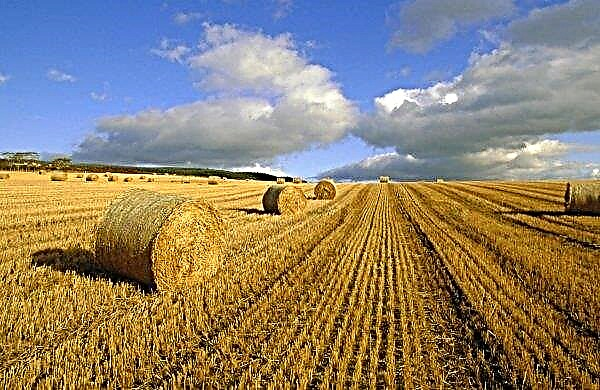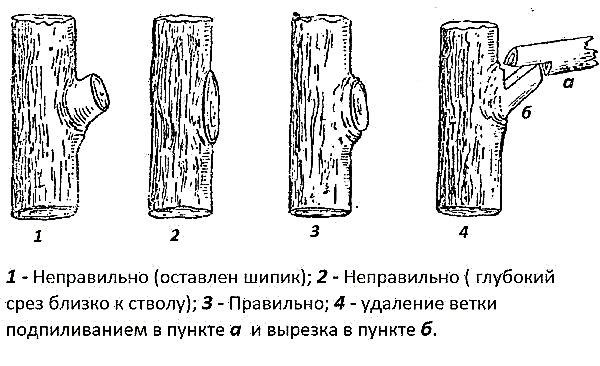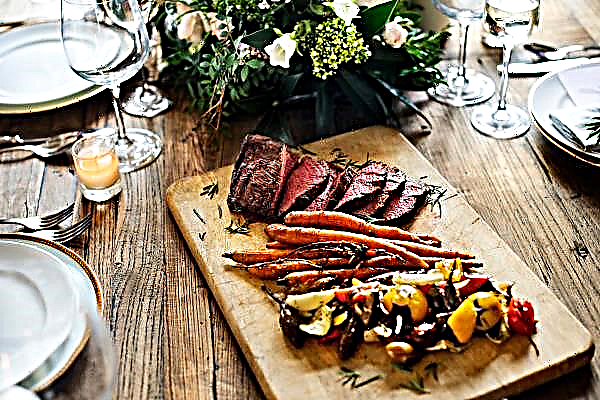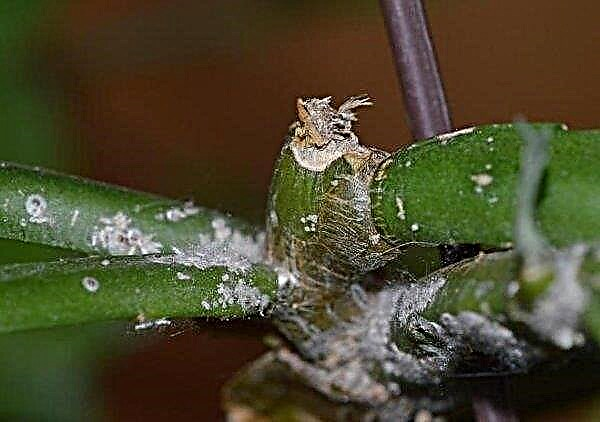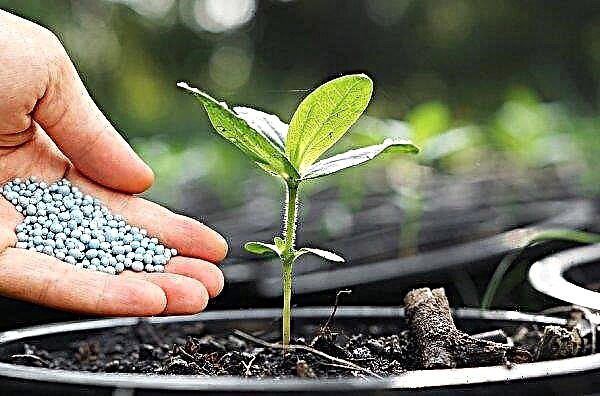So that plants in the greenhouse can bear fruit all year round, it is necessary to organize a heating system in it. One of these methods is gasification. How appropriate is this approach to heating a greenhouse and how the system itself can be arranged, read below.
Feasibility of heating greenhouses with gas
Previously, due to the lack of a sufficient number of gas heating appliances in the markets, the gasification procedure was quite expensive and troublesome. Most often, this approach to heating was used in greenhouses attached to residential buildings.
Did you know? In its natural state, natural gas has no taste, color or smell. And the familiar unpleasant odor of combustible raw materials that is familiar to everyone is acquired by adding (artificially) odorants, which is done to ensure consumer safety.
In this case, it was necessary to connect to a common gas pipeline, for which appropriate permissions were required. In addition, I had to look for specialized companies that could perform high-quality installation and "crash" into the common gas pipeline. Given these difficulties, few have used this approach to heating greenhouses.

Today on the market you can find a lot of different gas appliances that will provide high-quality space heating without the need to connect to a common gas supply system. In addition to the fact that gas heating has become more affordable, it has become possible to use it not only in greenhouses attached to houses, but also in buildings located anywhere on the site.
Advantages of gas heating in greenhouses
- The main advantages of gas heating in the greenhouse are:
- high level of efficiency of such equipment - less energy is absorbed than is generated;
- the ability to heat a fairly large area;
- no need to search for a place to store fuel, for example, for diesel and solid fuel boilers;
- when gas is burned in modern plants, the optimal amount of carbon dioxide necessary for the normal functioning of plants is released;
- long term of operation - from 15 to 50 years, depending on the type of equipment and material used to create it;
- lack of noise during system operation;
- simple equipment care.
Classification of gas heating systems in greenhouses
Gas heating equipment varies by type of structure and method of operation.
Depending on this, they are divided into 3 groups:
In addition, there are air-gas and gas-water systems. Not every device is suitable for heating a greenhouse, so you should consider the systems most suitable for use in such rooms.
- Namely:
- open burner heaters;
- convectors;
- gas-powered systems with infrared burners.
Open burner heaters
Designs of this type consist of a thermostat, as well as two burners - the main and the duty room. Instruments work by connecting to a gas bottle or portable gas heater (for example, you can use TAG-50).
Did you know? American gas workers easily find leaks in gas systems with carrion vultures. And all thanks to the fact that the reagent with the smell of rotten meat is mixed into the gas moving through the system.
The essence of the work lies in the fact that the heated air rises to the upper part of the building, and after cooling down a little, it falls into the zone of plant growth, while creating optimal microclimatic conditions.

A significant disadvantage of the installation is the burning of a large amount of oxygen inside the greenhouse, which can negatively affect the state of vegetation. To establish proper gas exchange, it is necessary to adjust the ventilation. You can do with an elementary exhaust system.
Gas convectors
This type of equipment usually consists of:
- corps - its main function is to protect the room from open fire, so it is made of heat-resistant materials;
- heat exchanger - Its main task is to heat the air in a short time, due to the release of its own heat obtained as a result of heating by fire;
- gas burner - consists of the ignition and the main parts, localized inside the heat exchanger;
- combination valve - provides pressure regulation;
- combustion exhaust systems;
- thermostat - controls the microclimate by maintaining the set temperature at a constant level;
- automation systems - He is responsible for analyzing the operation of the entire system as a whole, eliminating emergency situations (turning off the gas supply in case of a malfunction).
Regarding systems for the removal of combustion products, gas convectors are divided into fireplace and parapet. In the first embodiment, the air masses from the room enter the heat exchanger, and the combustion products are discharged through a vertical chimney to the street. This exhaust system is characteristic of a conventional furnace.

Parapet convectors in this regard are more environmentally friendly. The intake of air and products of combustion in them is carried out by means of a coaxial pipe laid through the outer wall. The pressure in the pipe is maintained by an integrated fan.
The essence of the device is the same as in the previous version, but is carried out using automation. Due to the fact that cold air is concentrated in the lower part of the building, as well as near windows and doorways, it is more advisable to install it in close proximity to these areas.
A household heat generator of such a plan is well suited for installation in a room with a gas supply system. For example, in a greenhouse attached to the house or intended for the production of products on an industrial scale.
Gas heaters with infrared burners
This type of structure was specially developed for heating large areas. At a temperature of + 10 ° C in the room, installing it, in a short time, you can warm the air to + 25 ° C in a radius of 6 m from the device.
Important! When buying an infrared heater for the greenhouse, select models designed for the street, as household appliances for residential premises are not suitable.
Such a device consists of:
- a cylindrical housing with a gas cylinder mounted;
- stand with a hose connecting the cylinder to the burner;
- a mesh with a large cross-section and a cylindrical handicap, to which a manual control panel is attached;
- umbrella of a gas burner operating in low pressure mode.

The unit uses propane. For 15 hours of continuous operation, a cylinder weighing 11.5 kg is sufficient. The burner is triggered by piezo ignition. The latest devices have automated panels that regulate the microclimate on their own.
The main difference between infrared heaters and convectors is that they do not heat up the air volume, but objects located within a radius of 6 m from them. When installing such a system, you need to take care of the presence of an exhaust system in the greenhouse to divert goranium products.
How to carry gas into the greenhouse with your own hands?
If you plan to connect to a common gas pipeline, you cannot deal with this issue yourself. First of all, you should contact the appropriate organizations in order to obtain permission and draw up a plan. After that, you need to invite a professional gas specialist, who will carry out work with the established instructions and issue relevant documents.

For self-installation of gas heating in a small, free-standing greenhouse, it is best to use the option with infrared burners. It is easier to install. To begin with, you should decide on the installation location. The market offers models designed for ceiling, parapet, wall mounting and mobile.
Then you should start organizing the ventilation system. It can be made of PVC pipes with a cross section of 10 cm. At one end of the building, the pipe is fixed so that it rises 50 cm above the roof level.
Important! For unauthorized connection to a common gas pipeline, without special affirmative documents, criminal liability is provided. In addition, all manipulations must be performed by government organizations.
On the opposite side, the pipe is mounted so that its lower end is located at a level of 1 m from the soil, and goes beyond the roof level by 10 cm. Thus, one pipe will serve for air flow, the other - for its removal from the room.
Next, the devices themselves are installed. Basic requirements for their installation:
- From the soil level to the equipment should be at least 1 m.
- Before plantations, from the heater, a distance of at least 1 m must also be maintained.
- If you need to place several infrared devices, then they are installed at a distance of 0.5 m from each other.
When connecting equipment to gas cylinders, all actions are quite simple. A hose is connected to the gearbox on the cylinder and fixed to the equipment. All fixation points are reinforced with clamps.
Video: Installing infrared heaters in a greenhouse
Gas Connection Safety Precautions
If it was decided to use gas cylinders for heating the greenhouse, safety measures must be observed when connecting them to the devices:
- After connecting the cylinder through the gearbox to the equipment and fixing the clamps, check for leaks. To do this, cover all compounds with soapy foam (any will do). If the formation of bubbles is observed, then there is a leak, and therefore, it is necessary to tighten all connections again and again carry out the act of control.
- Place the gas cylinder away from the heater 1 m.
- Do not check for leaks with burning paper or similar tricks.
- When filling the tank, the gas volume in the tank should not exceed 85% of the total, in order to avoid an increase in internal pressure.
Gas heating in greenhouses today is an affordable and economical heating option that allows you to get a crop year-round. The main thing is to choose the right equipment and observe safety measures during its subsequent operation.


